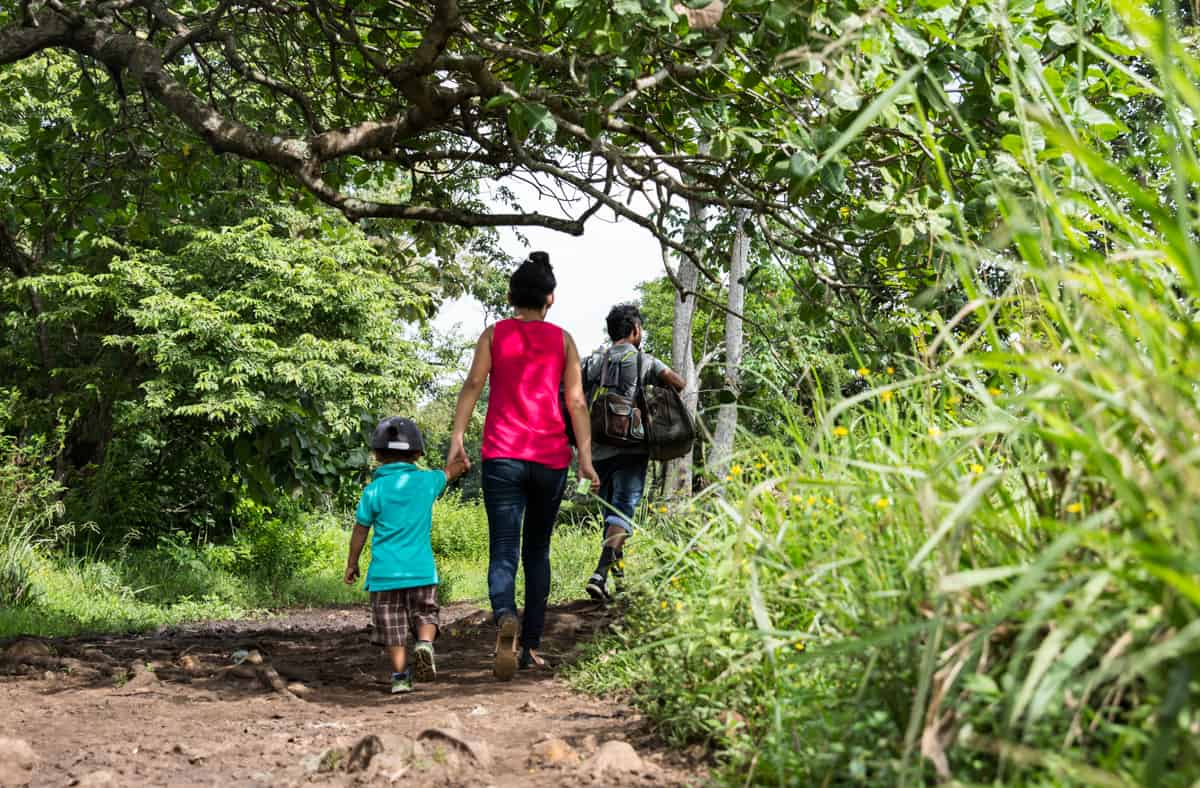The second pandemic wave in Costa Rica has struck the Northern Zone, where vulnerable populations have become the country’s new coronavirus epicenter.
Dozens of cases have emerged at agricultural and packaging centers, according to Costa Rican health authorities, and the country has partnered with the United Nations in part to respond to the influx of undocumented Nicaraguan migrants in the area.
Costa Rica’s economy and stability have long made it an attractive destination for immigrants, according to a 2018 analysis from the Organization for Economic Co-operation and Development (OECD).
“Immigrants contribute positively to economic growth,” OECD says. “Immigrants are estimated to contribute between 11.1% and 11.9% of the value added in Costa Rica, above their share of the population (9.1%).”
As the coronavirus pandemic spotlights Nicaraguan labor in Costa Rica, it’s important to understand some context about how we got here.
A brief history of Nicaraguan labor
Costa Rican industries, particularly agriculture, have a long history of relying on Nicaraguan labor.
Their arrival in the country “reflects political and economic events as well as natural disasters,” OECD says.
A 1972 earthquake in Managua resulted in an increase of migration to Costa Rica, and the numbers of migrants continued to rise during the ongoing conflicts of the 1970s and 80s, followed by economic instability of the 1990s.
For decades, Costa Rica’s immigration policies have aimed “to maximize the benefits of immigration and protect human rights while protecting citizens’ working and living conditions,” according to OECD.
In 1993, the “Agreement on Labor Migration between the Government of Costa Rica and the Republic of Nicaragua” established legal avenues for temporary migration.
“Costa Rica will admit Nicaraguan citizens who wish to engage in periodic agricultural work, mainly sugarcane and coffee, under the migratory category of Non-Residents as migrant workers,” the agreement read, in part.
In 2010, the General Law on Migration and Foreigners provided a further framework for undocumented immigrants to legalize their status via employment sponsorship. But many private companies did not collaborate with the often-lengthy bureaucratic process and have simply continued hiring unauthorized workers.
“Of the 75,000 foreign workers estimated working in the agricultural sector by [Costa Rica’s Immigration Administration], just 5,000 have work residencies,” says a 2015 report from the Migration Policy Institute (MPI).
These Nicaraguans work longer hours and earn half the pay as their Costa Rican counterparts, MPI says. And given their undocumented status, there are often few recourses to fight for higher wages or better living conditions.
“Lack of access to certain public services and to the wider labor market can exacerbate their vulnerability,” OCDE said.
“This is particularly true for migrants from Nicaragua, who may not access judicial processes out of fear of deportation.”
Recent exacerbations at the border
More than 100,000 people have fled Nicaragua in the two years since the Central American country plunged into political and social crisis, according to the United Nations refugee agency.
As of March 2020, Costa Rica was hosting an estimated 77% of those refugees and asylum seekers. At a speech late last year, President Carlos Alvarado acknowledged Costa Rica didn’t have the resources to handle the immigration surge.
“There is a gap between what countries like Costa Rica are providing with great effort to the refugees, and what their actual needs are. This gap needs to be closed,” he said at the time.
The UN ultimately provided Costa Rica with $4.1 million to help impoverished migrants.
But by mid-March, the region was facing another crisis. Costa Rica declared a state of emergency due to the coronavirus pandemic and closed its borders to most foreigners.
In neighboring Nicaragua, the government largely ignored the pandemic, a decision which has led to the country having widespread community transmission of SARS-CoV-2.
While Costa Rica has made efforts to fortify its northern border during the pandemic, authorities acknowledge that it’s impossible to monitor all 300-plus kilometers.
As a result, Nicaraguans who rely on the income have continued entering the country to work for Costa Rican businesses that rely on their labor.
Costa Rica’s response
Costa Rican officials have for weeks recognized that Nicaragua’s essentially non-existent handling of the coronavirus represents a threat.
In April, Costa Rica built an airfield by its northern border to track migration, while last month Costa Rica began restricting cargo entry after 50 truckers tested positive for the coronavirus.
Earlier this month, Costa Rica announced stricter health measures in much of its Northern Zone. Expanded driving restrictions are among the methods Costa Rica hopes will slow undocumented immigration so that it can better contain the coronavirus.
But those efforts haven’t been successful. San Carlos and San Ramón, two northern cantons, now have the country’s highest number of active coronavirus cases.
Some of these cases may be imported, but poor working and living conditions in Costa Rica have increased spread, the Health Ministry has said.
On June 11, the UN announced it will assist Costa Rica’s Northern Zone efforts by coordinating participation from the Pan American Health Organization, the Red Cross and Doctors Without Borders.
And as Costa Rica scrambles to contain the new outbreak, some businesses — like the National Coffee Institute and pineapple plantations in the Northern Zone — have begun seeking workers in Costa Rica who are willing to fill the thousands of available jobs.






